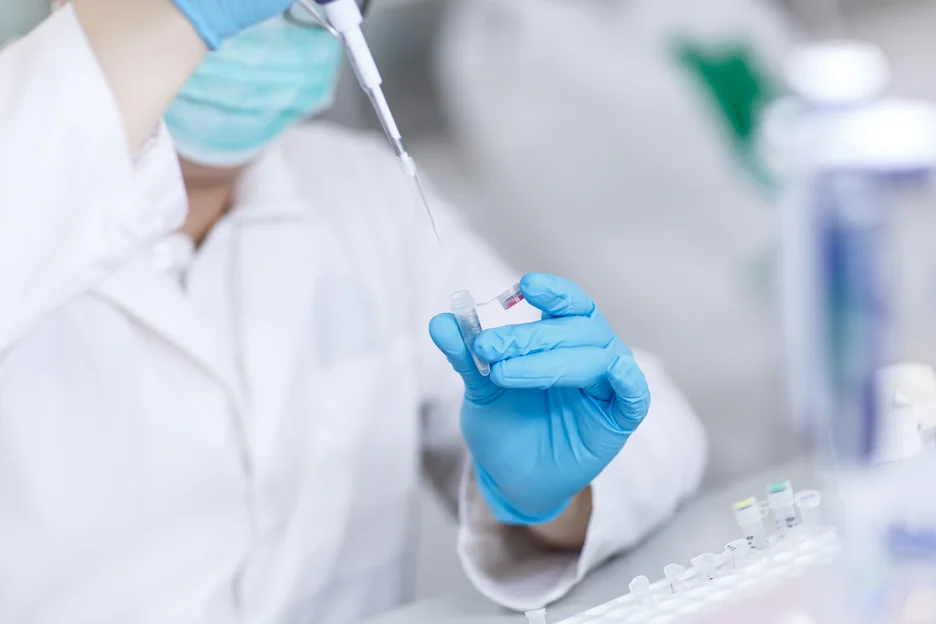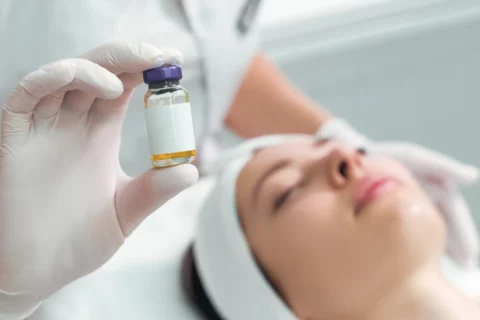Weighing the Pros and Cons for Informed Decision-Making in Your Practice
The Rise of Regenerative Aesthetics
This blog post will discuss two powerful regenerative options: exosomes and stem cell therapy.
We’ll explore their unique properties, mechanisms of action, and applications in aesthetics, empowering you to make informed decisions for your practice and your patients.
A Brief Overview of Exosome and Stem Cell Therapies
Exosome and stem cell therapies represent a paradigm shift in aesthetics, moving away from traditional approaches that simply mask signs of aging towards treatments that actively promote tissue regeneration and repair.
- Exosomes: These tiny vesicles, secreted by cells, act as messengers, delivering a potent cocktail of growth factors, cytokines, and genetic material that stimulate cellular rejuvenation and repair. Think of them as tiny packages delivering instructions for skin renewal.
- Stem Cells: These undifferentiated cells possess the unique ability to self-renew and differentiate into various cell types, making them powerful tools for tissue regeneration and repair. They can be harvested from various sources, including adipose tissue and bone marrow.
The Growing Demand for Non-Invasive Rejuvenation Options
Patients are increasingly seeking non-invasive or minimally invasive options that deliver noticeable results with minimal downtime.
Both exosome and stem cell therapies cater to this demand, offering procedures that can improve skin texture, tone, reduce wrinkles, and promote overall skin health with little to no recovery time.
Addressing the Need for Informed Decision-Making in Your Practice
With the rapid advancements in regenerative aesthetics, it’s crucial to stay informed about the latest research and understand the nuances of each treatment modality. This guide will equip you with the knowledge you need to make evidence-based decisions, ensuring you can offer the most appropriate and effective therapies for your patients.
Exosomes vs Stem Cells
At a fundamental level, exosomes and stem cells differ significantly in their composition and mechanism of action.
- Exosomes: These are cell-derived vesicles that act as messengers, delivering signals that promote regeneration and repair. They are not cells themselves but rather packages of bioactive molecules.
- Stem Cells: These are living cells with the potential to differentiate into various cell types, directly contributing to tissue regeneration and repair.
Exosome Therapy vs Stem Cell Therapy
In a clinical setting, the application of exosomes and stem cells also differs:
- Exosome Therapy: Typically involves injecting or topically applying exosomes derived from a donor source, such as mesenchymal stem cells (MSCs). The exosomes then stimulate the patient’s own cells to promote regeneration and repair.
- Stem Cell Therapy: Involves harvesting stem cells from the patient (autologous) or a donor (allogeneic) and then injecting them into the treatment area. The stem cells then directly contribute to tissue regeneration and repair.
Understanding the Science: Exosomes and Stem Cells

Exosomes: The Power of Cell Signaling
What are Exosomes and How Do They Work?
Exosomes are nano-sized vesicles (30-150nm in diameter) released by cells throughout the body. They are enclosed by a lipid bilayer membrane and contain a variety of bioactive molecules, including proteins, lipids, nucleic acids (microRNA and mRNA), and growth factors.
Exosomes act as messengers, transferring these molecules between cells. This intercellular communication plays a vital role in various physiological processes, including tissue repair, immune modulation, and cell growth.
The Role of Exosomes in Tissue Regeneration and Repair
Exosomes are key players in tissue regeneration and repair due to their ability to:
- Stimulate Cell Proliferation and Differentiation: Exosomes can promote the growth and specialization of cells, aiding in the regeneration of damaged tissues.
- Reduce Inflammation: Exosomes can modulate the immune response, reducing inflammation and promoting healing.
- Promote Angiogenesis: Exosomes can stimulate the formation of new blood vessels, which is essential for tissue repair.
- Deliver Growth Factors and Cytokines: Exosomes carry a concentrated dose of growth factors and cytokines, which are essential for tissue regeneration and repair.
Exosome Isolation and Preparation for Aesthetic Applications
Exosomes used in aesthetic applications are typically derived from mesenchymal stem cells (MSCs). MSCs are isolated from donor tissues, such as adipose tissue or bone marrow, and cultured in a laboratory setting. The exosomes are then isolated from the MSC culture media using various techniques, such as ultracentrifugation or size-exclusion chromatography.
At FACE Med Store, we offer a curated selection of high-quality exosome products that are meticulously processed to ensure purity, potency, and safety. We understand the importance of using superior products to achieve optimal patient outcomes.
Are Exosomes Stem Cells?
No, exosomes are not stem cells. They are vesicles released by stem cells and other cell types. While exosomes carry some of the regenerative benefits of their parent cells, they do not have the same ability to self-renew and differentiate into various cell types.
Stem Cells: The Foundation of Cellular Renewal
Different Types of Stem Cells Used in Aesthetics
Several types of stem cells are used in aesthetic applications:
- Mesenchymal Stem Cells (MSCs): These are the most commonly used stem cells in aesthetics due to their ability to differentiate into various cell types, including skin cells, and their ability to secrete growth factors that promote tissue regeneration. MSCs can be derived from various sources, including adipose tissue, bone marrow, and umbilical cord tissue.
- Adipose-Derived Stem Cells (ADSCs): These are a type of MSC found in fat tissue. They are relatively easy to harvest and have shown promise in skin rejuvenation and fat grafting procedures.
- Bone Marrow-Derived Stem Cells (BMSCs): These are another type of MSC found in bone marrow. They have been used in various medical applications, including orthopedic and wound healing, and are also being explored for their potential in aesthetic treatments.
The Mechanism of Action of Stem Cells in Skin Rejuvenation
Stem cells contribute to skin rejuvenation through several mechanisms:
- Cell Differentiation: Stem cells can differentiate into skin cells, such as fibroblasts and keratinocytes, replacing damaged or aging cells and contributing to the renewal of the skin’s structure.
- Growth Factor Secretion: Stem cells secrete a variety of growth factors that stimulate collagen production, promote angiogenesis, and enhance the overall health and vitality of the skin.
- Paracrine Signaling: Stem cells release signaling molecules that communicate with surrounding cells, promoting tissue repair and regeneration.
Stem Cell Harvesting and Processing for Therapeutic Use
Stem cell harvesting and processing involve several steps:
- Harvesting: Stem cells are harvested from the patient (autologous) or a donor (allogeneic). Common sources include adipose tissue (fat) and bone marrow.
- Isolation and Processing: The harvested tissue is processed to isolate and concentrate the stem cells. This typically involves centrifugation and other specialized techniques.
- Administration: The processed stem cells are then injected into the treatment area.
Comparing the Two: Exosomes vs. Stem Cells in Aesthetics

Efficacy and Clinical Outcomes
Evidence-Based Results for Exosome Therapy in Aesthetics
Numerous studies have demonstrated the efficacy of exosome therapy in various aesthetic applications:
- Skin Rejuvenation: Exosomes have been shown to improve skin texture, reduce wrinkles, and enhance overall skin tone and radiance.
- Scar Reduction: Exosomes have demonstrated efficacy in reducing the appearance of acne scars, surgical scars, and other types of scars.
- Hair Restoration: Exosomes are being explored for their potential in promoting hair growth and treating hair loss.
Clinical Studies on Stem Cell Therapy for Skin Rejuvenation
Stem cell therapy has also shown promising results in clinical studies:
- Wrinkle Reduction: Stem cell injections have been shown to reduce the appearance of wrinkles and fine lines.
- Skin Tightening: Stem cells can improve skin elasticity and firmness, leading to a more youthful appearance.
- Scar Improvement: Stem cell therapy has shown potential in improving the appearance of scars.
Comparative Analysis: Which Therapy Delivers Superior Results?
Both exosome and stem cell therapies can deliver significant improvements in skin health and appearance. The choice between the two often depends on the specific condition being treated and the patient’s individual needs and goals.
- Exosomes: May be preferred for their targeted delivery of growth factors and cytokines, minimal invasiveness, and lower risk of adverse reactions.
- Stem Cells: May be more suitable for conditions requiring significant tissue regeneration, such as deep wrinkles, severe scarring, or fat grafting procedures.
Are Exosomes Better than Stem Cells?
The question of whether exosomes are “better” than stem cells is not straightforward. Both therapies have unique strengths and limitations.
- Exosomes: Offer a more targeted and potentially safer approach with minimal downtime.
- Stem Cells: Provide broader regenerative potential due to their ability to differentiate into various cell types.
The best choice depends on the specific needs of the patient and the expertise of the practitioner.
Safety and Side Effects
Potential Risks and Complications Associated with Exosomes
Exosome therapy is generally considered safe, with a low risk of adverse effects. However, potential risks include:
- Allergic Reactions: Although rare, allergic reactions to the exosome product are possible.
- Infection: As with any injection procedure, there is a small risk of infection at the injection site.
- Bruising and Swelling: Mild bruising and swelling at the injection site are common and typically resolve within a few days.
Safety Profile of Stem Cell Therapy in Aesthetic Applications
Stem cell therapy also has a generally good safety profile, but potential risks include:
- Immune Rejection: If allogeneic stem cells (from a donor) are used, there is a risk of immune rejection.
- Tumor Formation: Although rare, there is a theoretical risk that stem cells could contribute to tumor formation.
- Unintended Differentiation: Stem cells could potentially differentiate into unwanted cell types.
Minimizing Risks and Ensuring Patient Safety in Your Practice
To minimize risks and ensure patient safety, it’s crucial to:
- Use High-Quality Products: Choose exosome and stem cell products from reputable suppliers like FACE Med Store that adhere to stringent quality control standards.
- Follow Proper Protocols: Adhere to established protocols for harvesting, processing, and administering exosomes and stem cells.
- Conduct Thorough Patient Assessments: Carefully evaluate each patient’s medical history and suitability for the chosen therapy.
- Obtain Informed Consent: Ensure patients are fully informed about the potential benefits and risks of the treatment before proceeding.
Practical Considerations for Your Practice
Ease of Administration and Treatment Protocols
Exosome therapy typically involves simpler administration protocols compared to stem cell therapy:
- Exosomes: Can be administered via injection or topical application, often requiring fewer treatment sessions.
- Stem Cells: May require more complex harvesting and processing procedures, potentially involving longer treatment sessions and recovery times.
Cost-Effectiveness and Return on Investment
The cost-effectiveness of exosome and stem cell therapies can vary depending on several factors, including the source of the product, the number of treatments required, and the pricing structure of your practice.
- Exosomes: May be more cost-effective due to simpler processing and administration.
- Stem Cells: May involve higher initial costs due to harvesting and processing procedures.
It’s important to carefully evaluate the costs and potential return on investment for each therapy in your specific practice setting.
Patient Selection and Suitability for Each Therapy
Patient selection is crucial for achieving optimal outcomes with both exosome and stem cell therapies.
- Exosomes: May be more suitable for patients seeking minimally invasive treatments with minimal downtime, such as those looking to improve skin texture, reduce fine lines and wrinkles, or address mild scarring.
- Stem Cells: May be a better option for patients with more significant tissue damage or volume loss, such as those with deep wrinkles, severe scarring, or those undergoing fat grafting procedures.
Integrating Exosome Therapy into Your Practice
At FACE Med Store, we offer a wide selection of high-quality exosome products to help you seamlessly integrate this innovative therapy into your practice. Our products are sourced from reputable suppliers and undergo rigorous testing to ensure purity, potency, and safety.
We are committed to providing you with the tools and resources you need to deliver exceptional results for your patients.
Peptides vs Exosomes
Peptides and exosomes are both used in aesthetic treatments, but they have different mechanisms of action.
- Peptides: Are short chains of amino acids that can stimulate collagen production, improve skin elasticity, and reduce wrinkles.
- Exosomes: Deliver a broader range of bioactive molecules, including growth factors, cytokines, and genetic material, that can promote more comprehensive tissue regeneration and repair.
While peptides can be effective for addressing specific skin concerns, exosomes offer a more holistic approach to skin rejuvenation.
Addressing Common Concerns and Misconceptions

Debunking Myths Surrounding Exosomes and Stem Cell Therapies
Myth: Exosomes and Stem Cells Are the Same
This is a common misconception. As discussed earlier, exosomes are vesicles released by cells, including stem cells, while stem cells are living cells capable of self-renewal and differentiation. They are distinct entities with different roles in regenerative medicine.
Myth: Exosome Therapy Is Risk-Free
While exosome therapy generally has a very good safety profile, it is not entirely risk-free. Potential risks, although rare, include allergic reactions and infection at the injection site.
Myth: Stem Cell Therapy Always Uses Embryonic Stem Cells
This is not true. While embryonic stem cells are one type of stem cell, aesthetic applications most commonly utilize adult stem cells derived from sources like adipose tissue or bone marrow.
Ethical Considerations in Regenerative Aesthetics
Source of Stem Cells
The ethical considerations surrounding stem cell therapy primarily focus on the source of the stem cells.
- Embryonic Stem Cells: Raise ethical concerns due to their derivation from human embryos.
- Adult Stem Cells: Generally considered ethically acceptable as they are harvested from adult tissues with the patient’s consent.
It’s important to be transparent with patients about the source of the stem cells used in any treatment.
Use of Exosomes
Exosome therapy partially avoids the ethical concerns associated with stem cell therapy because it utilizes cell-free products derived from ethically sourced MSCs.
The Importance of Transparency and Patient Education
Educating Patients
Transparency and patient education are paramount when offering regenerative aesthetic treatments. Patients should be fully informed about:
- The Difference between Exosomes and Stem Cells: Explain their unique properties and mechanisms of action.
- Potential Benefits and Risks: Discuss realistic expectations and potential side effects.
- Ethical Considerations: Be transparent about the source of the products used.
- Treatment Costs: Provide clear information about the costs involved.
Providing Evidence-Based Information
Support your discussions with evidence-based information, including clinical study results and research findings. This helps build trust with your patients and empower them to make informed decisions.
What is the Difference Between Exosomes and Stem Cells?
Fundamental Differences:
- Exosomes: Are nano-sized vesicles released by cells, including stem cells. They act as messengers, delivering bioactive molecules that promote regeneration and repair.
- Stem Cells: Are living cells capable of self-renewal and differentiation into various cell types. They directly contribute to tissue regeneration and repair.
Mechanisms of Action:
- Exosomes: Deliver growth factors, cytokines, and genetic material to target cells, stimulating their regenerative capabilities.
- Stem Cells: Differentiate into specialized cell types and secrete growth factors that promote tissue repair and regeneration.
Practical Applications:
- Exosomes: Typically administered via injection or topical application.
- Stem Cells: May involve more complex harvesting and processing procedures before injection.
Difference Between Exosomes and Stem Cells
In essence, the key difference lies in their nature:
- Exosomes: Are cell-derived products that act as signals to promote regeneration.
- Stem Cells: Are living cells that actively participate in tissue regeneration.
The Future of Regenerative Aesthetics: Trends and Innovations
Emerging Research and Advancements in Exosome Technology
Exosome technology is rapidly evolving, with ongoing research focusing on:
- Optimizing Exosome Isolation and Purification: Developing more efficient and cost-effective methods for isolating and purifying exosomes.
- Enhancing Exosome Delivery: Exploring novel methods to improve the delivery of exosomes to target tissues, such as using micro-needling or other transdermal delivery systems.
- Engineering Exosomes: Modifying exosomes to enhance their therapeutic potential, such as loading them with specific growth factors or other bioactive molecules.
Exploring the Potential of Stem Cell Therapy in Aesthetics
Stem cell research in aesthetics continues to expand, with ongoing investigations into:
- New Sources of Stem Cells: Exploring alternative sources of stem cells, such as induced pluripotent stem cells (iPSCs) derived from adult cells.
- Stem Cell Differentiation and Homing: Improving methods to control stem cell differentiation and enhance their ability to migrate to target tissues (homing).
- Combining Stem Cells with Other Therapies: Investigating the synergistic effects of combining stem cell therapy with other treatments, such as lasers, micro-needling, or growth factor therapy.
The Role of Personalized Medicine in Tailoring Treatments
Personalized medicine is becoming increasingly important in regenerative aesthetics, allowing for treatments tailored to each patient’s unique needs and characteristics. This involves:
- Genetic Testing: Analyzing a patient’s genetic profile to identify factors that may influence treatment response.
- Biomarker Analysis: Measuring specific biomarkers in the skin or blood to assess tissue health and guide treatment decisions.
- Customized Treatment Protocols: Developing individualized treatment plans based on a patient’s specific needs and goals.
Making Informed Choices for Optimal Patient Outcomes

Key Takeaways for Choosing Between Exosomes and Stem Cells
When deciding between exosome and stem cell therapies for your aesthetic practice, consider the following:
- Patient Needs and Goals: What are the patient’s specific concerns and desired outcomes?
- Treatment Area and Condition: What is the specific area being treated and the severity of the condition?
- Invasive vs. Non-Invasive: Does the patient prefer a minimally invasive approach or are they comfortable with a more invasive procedure?
- Cost and Recovery Time: What are the costs involved and the expected recovery time for each therapy?
- Potential Benefits and Risks: Carefully weigh the potential benefits and risks of each therapy.
Empowering Your Practice with Cutting-Edge Regenerative Therapies
By incorporating exosome and stem cell therapies into your practice, you can offer your patients the latest advancements in regenerative aesthetics. These cutting-edge treatments can deliver remarkable results, enhancing patient satisfaction and setting your practice apart.
Partnering with Face Med Store for Your Exosome Therapy Needs
At FACE Med Store, we are your trusted partner in regenerative aesthetics. We offer a comprehensive selection of high-quality exosome products, along with educational resources and support to help you successfully integrate these innovative therapies into your practice.
We are committed to empowering you with the knowledge and tools you need to achieve excellence in patient care and deliver outstanding results.






